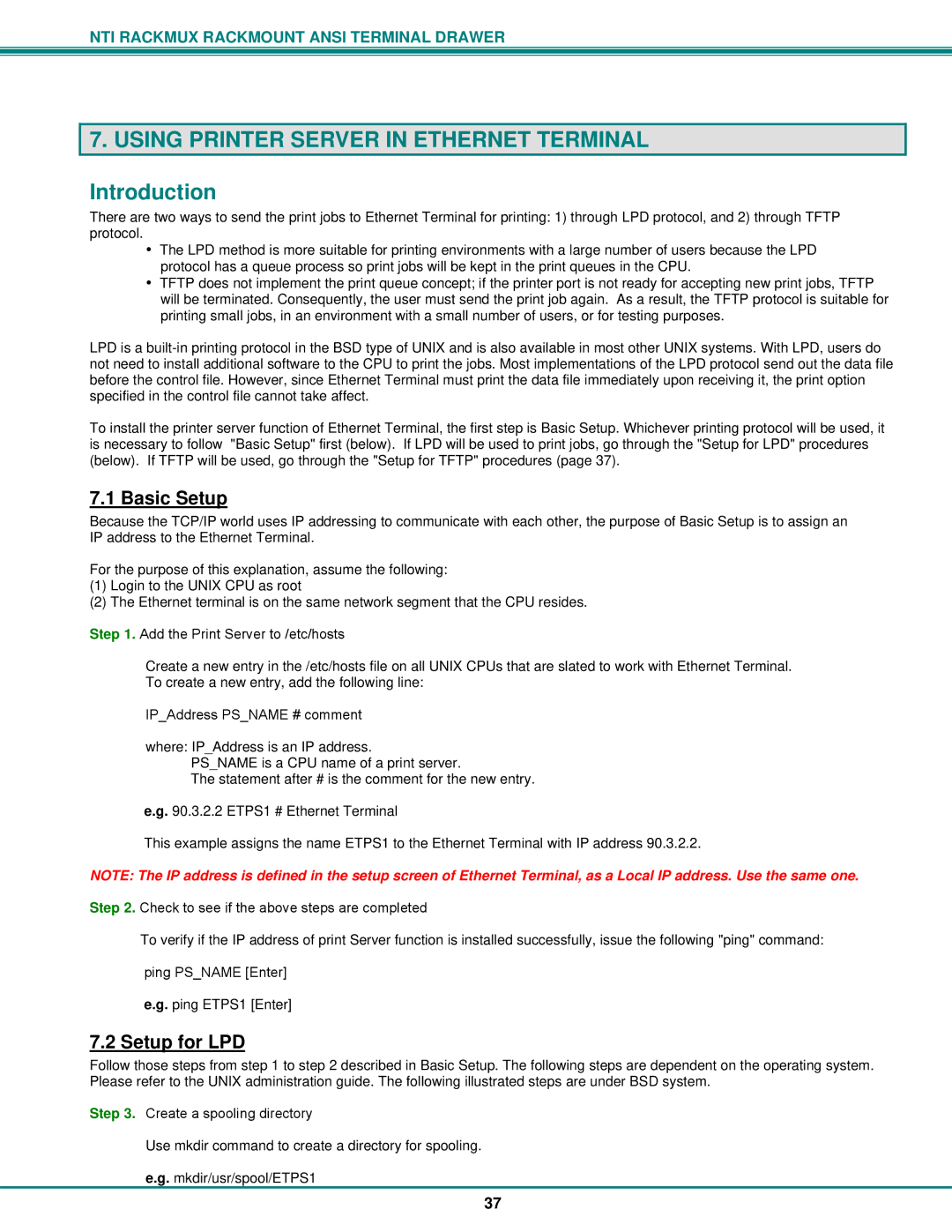
NTI RACKMUX RACKMOUNT ANSI TERMINAL DRAWER
7. USING PRINTER SERVER IN ETHERNET TERMINAL
Introduction
There are two ways to send the print jobs to Ethernet Terminal for printing: 1) through LPD protocol, and 2) through TFTP protocol.
•The LPD method is more suitable for printing environments with a large number of users because the LPD protocol has a queue process so print jobs will be kept in the print queues in the CPU.
•TFTP does not implement the print queue concept; if the printer port is not ready for accepting new print jobs, TFTP will be terminated. Consequently, the user must send the print job again. As a result, the TFTP protocol is suitable for printing small jobs, in an environment with a small number of users, or for testing purposes.
LPD is a
To install the printer server function of Ethernet Terminal, the first step is Basic Setup. Whichever printing protocol will be used, it is necessary to follow "Basic Setup" first (below). If LPD will be used to print jobs, go through the "Setup for LPD" procedures (below). If TFTP will be used, go through the "Setup for TFTP" procedures (page 37).
7.1 Basic Setup
Because the TCP/IP world uses IP addressing to communicate with each other, the purpose of Basic Setup is to assign an IP address to the Ethernet Terminal.
For the purpose of this explanation, assume the following:
(1)Login to the UNIX CPU as root
(2)The Ethernet terminal is on the same network segment that the CPU resides.
Step 1. Add the Print Server to /etc/hosts
Create a new entry in the /etc/hosts file on all UNIX CPUs that are slated to work with Ethernet Terminal. To create a new entry, add the following line:
IP_Address PS_NAME # comment
where: IP_Address is an IP address.
PS_NAME is a CPU name of a print server.
The statement after # is the comment for the new entry.
e.g. 90.3.2.2 ETPS1 # Ethernet Terminal
This example assigns the name ETPS1 to the Ethernet Terminal with IP address 90.3.2.2.
NOTE: The IP address is defined in the setup screen of Ethernet Terminal, as a Local IP address. Use the same one.
Step 2. Check to see if the above steps are completed
To verify if the IP address of print Server function is installed successfully, issue the following "ping" command:
ping PS_NAME [Enter]
e.g. ping ETPS1 [Enter]
7.2 Setup for LPD
Follow those steps from step 1 to step 2 described in Basic Setup. The following steps are dependent on the operating system. Please refer to the UNIX administration guide. The following illustrated steps are under BSD system.
Step 3. Create a spooling directory
Use mkdir command to create a directory for spooling.
e.g. mkdir/usr/spool/ETPS1
37
